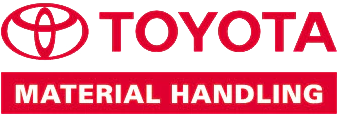WHS policies are designed to protect employees from unique dangers within their place of employment, creating a safe and healthy working environment.
An intuitive system keeps track of incidents, helps identify hazards, and simplifies processes to ensure that safety is the top priority.
What are the Benefits of Implementing a Workplace Health and Safety policy?
Of course, the number one priority in any workplace is the safety of your employees, but there are also a whole host of other benefits that you can achieve with the right Workplace Health and Safety (WHS) policy.
Benefits for your Staff:
- Improved productivity
- Increased employee satisfaction
- Easy access to information
- Streamlined processes
- Increased accountability
Benefits for your Business:
- Reduced staff turnover
- Ensure compliance
- Gain certification
- Win tenders
What are the Challenges of Implementing WHS Policies?
Now that we have given a brief overview of the benefits, let’s take a step back and take a closer look at some of the challenges of implementing the right policy for your workplace and people.
In our experience, there are a few hurdles that prevent or limit how an organisation can successfully implement its own WHS management system to protect its staff.
Four common challenges facing businesses and leaders include:
1) Many Moving Parts
WHS policies typically involve a myriad of people, from employees and managers to health and safety officers and external contractors, partners, or visitors.
Keeping track of all these people and their roles and responsibilities can be a challenge.
The solution? Cloud-based software that enables collaboration, communication, and real-time updates and notifications among all stakeholders.
2) Cumbersome or Outdated Systems
Many workplaces still use paper-based systems for WHS, which can be time-consuming, prone to errors, and hard to manage. Form-based systems are cumbersome and require a lot of administration!
Even some digital systems can be cumbersome if they are poorly designed or lack the intuitiveness required for their users.
By adopting a modern and efficient OHS management system, organisations can improve compliance, reduce risk, and create a safer and healthier workplace for their employees.
Users can benefit from mobile accessibility, automated workflows, and real-time incident reporting.
Instead, we’re looking for an intuitive system that takes the guesswork out of safety.
3) Inflexible Systems
One size doesn’t fit all!
WHS policies need to be tailored to the specific needs and risks of each workplace. A one-size-fits-all approach is unlikely to be effective or compliant with an organisation’s unique industry.
You can’t improve what you can’t see. Spend more time thinking about what you can improve and less time trying to make sense of a system that hardly adapts to your business’s needs or challenges.
4) Lack of Accountability
Effective implementation of WHS policies requires the buy-in and support of management.
However, sometimes managers may not prioritise or fully understand the importance of WHS, leading to a lack of accountability and commitment.
To address this challenge, organisations should ensure that WHS policies are integrated into their overall business strategy and goals. They should also provide regular training and education to managers to raise awareness of the importance of WHS and their roles in implementing and enforcing it.
WHS software can also help by providing data and analytics that demonstrate the impact of WHS policies on:
- Productivity
- Employee morale
- Compliance
Advanced safety software in Australia is tailored to meet your business’s needs and helps managers and others in leadership roles better understand the value of taking a proactive approach to risk management.
Skytrust’s Comprehensive Solution supports Businesses across the entire WHS Lifecycle
1) Implementation: The first step is an effective Policy that is accurately implemented across your Workforce
Ditch the paperwork and simplify complicated processes with Skytrust.
Skytrust’s software simplifies and streamlines the process of implementing WHS policies. It provides a user-friendly interface that enables organisations to customise their policies to their specific needs, and helps them ensure that their policies are up-to-date with relevant legislation and industry standards.
2) Monitoring: How can you Monitor the Health and Safety of Staff?
Skytrust’s cloud-based anytime-anywhere access provides real-time visibility into the status of WHS policies across your organisation.
It allows businesses to track compliance with policies, identify areas of non-compliance, and take corrective action as needed.
The software also generates reports and dashboards that provide insights into WHS performance, helping businesses to identify trends, risks, and opportunities for improvement.
3) Continual Improvement and Analysis: How can you assess your WHS Management System and identify where Improvements could be made?
Skytrust’s safety software enables businesses to continually improve their WHS policies by providing tools for analysis and feedback.
It allows organisations to collect data on incidents, hazards, and risks, and use that data to identify weaknesses and opportunities for improvement.
The software also facilitates collaboration and communication among employees and stakeholders, enabling them to share ideas and best practices for WHS management.
Want a FREE three-month trial on us? Enquire now!
Skytrust is an Adelaide-based business supporting businesses, brands, and employees all over the world. More than 140,000 global users rely on Skytrust to improve safety and productivity in their workplaces.
From manufacturing and food & beverage to government, aged care, and transport, Skytrust will streamline your business’ safety needs.
If you think Skytrust could be a good match for your business, we’d love to set you up on the platform for a FREE three-month trial. No obligation and no cost; just complete access to our system – with all your own data!
See for yourself how Skytrust can help you.






